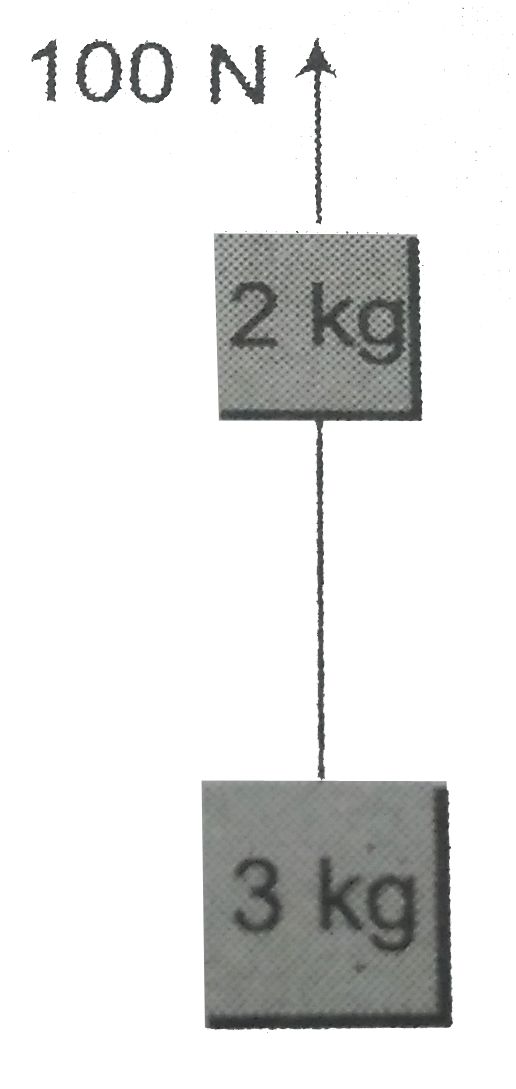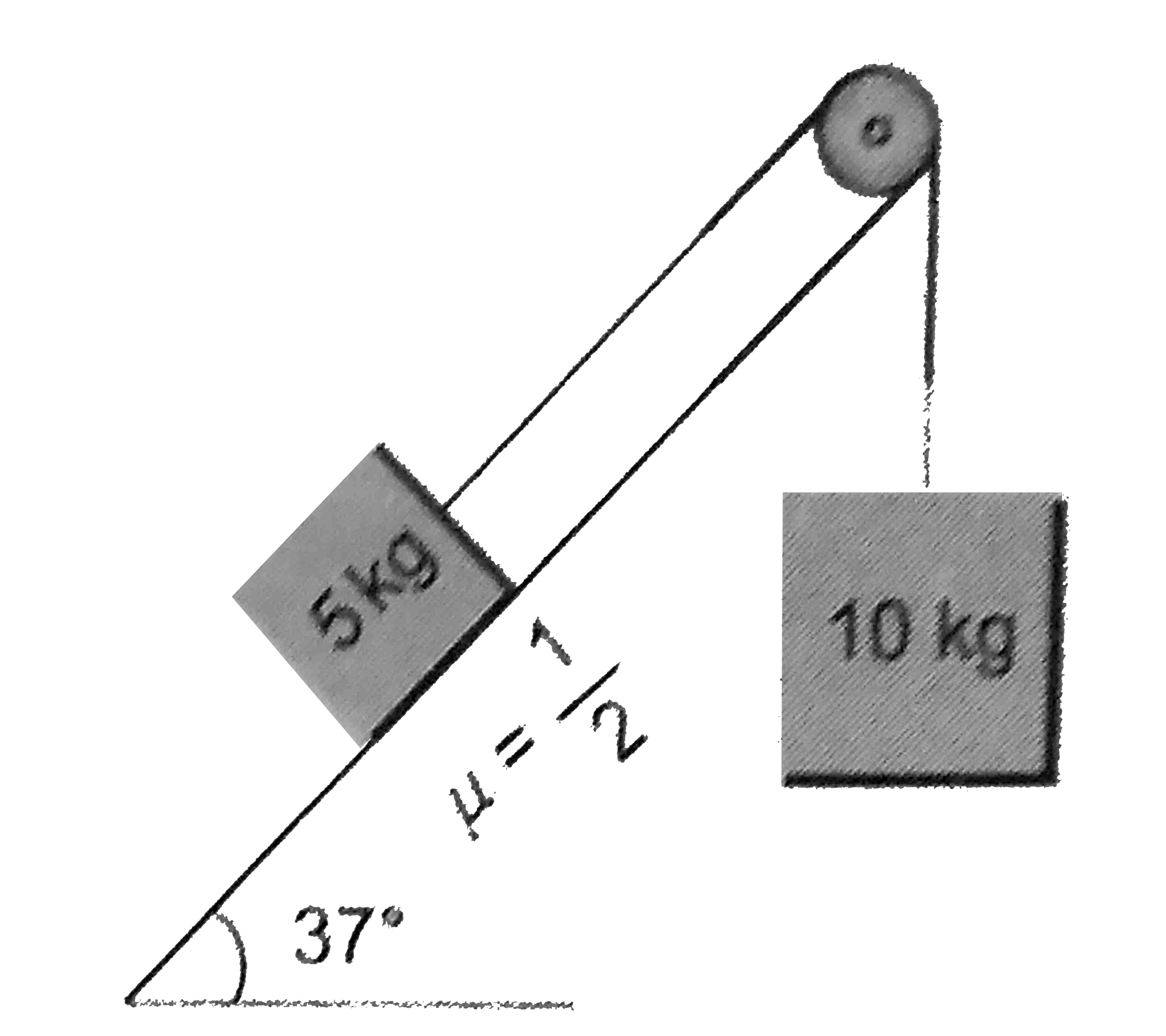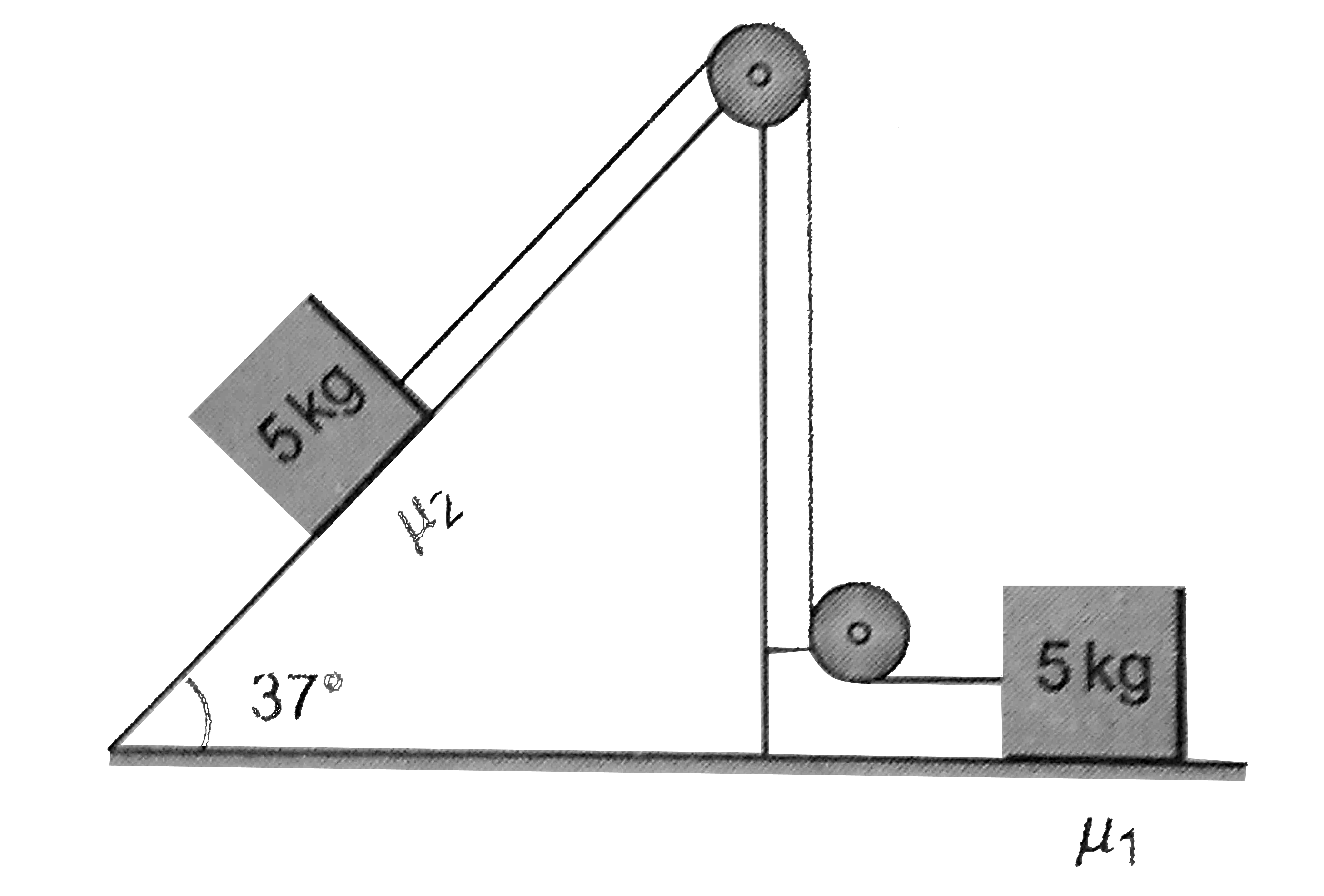Force of friction and tension in a string are
gravitational forces
weak forces
electromagnetic forces
nuclear forces
The correct Answer is:(c )
To answer the question regarding the force of friction and tension in a string, we can break down the concepts step by step.
1. Understanding Forces:
- The question asks about the nature of the force of friction and tension in a string. Both of these forces are fundamental concepts in physics that describe interactions between objects.
2. Force of Friction:
- The force of friction is a resistive force that opposes the motion of an object. It acts in the opposite direction to the movement of the object. For example, if a block is sliding to the right, the frictional force will act to the left.
3. Tension in a String:
- Tension is the force transmitted through a string, rope, or cable when it is pulled tight by forces acting from opposite ends. When a weight is hung from a string, the tension in the string acts upward, counteracting the downward force of gravity.
4. Classification of Forces:
- Both the force of friction and tension can be classified under electromagnetic forces. This is because they arise from the interactions at the atomic level, particularly the electromagnetic interactions between charged particles (like electrons).
5. Comparison with Other Forces:
- While gravitational force, nuclear force, and weak force are also fundamental forces, friction and tension are specifically related to the electromagnetic interactions. Gravitational force acts over large distances and is always attractive, while electromagnetic forces can be both attractive and repulsive.
6. Conclusion:
- Therefore, the force of friction and tension in a string are categorized as electromagnetic forces due to their nature of interaction at the atomic level.
- The question asks about the nature of the force of friction and tension in a string. Both of these forces are fundamental concepts in physics that describe interactions between objects.
- The force of friction is a resistive force that opposes the motion of an object. It acts in the opposite direction to the movement of the object. For example, if a block is sliding to the right, the frictional force will act to the left.
- Tension is the force transmitted through a string, rope, or cable when it is pulled tight by forces acting from opposite ends. When a weight is hung from a string, the tension in the string acts upward, counteracting the downward force of gravity.
- Both the force of friction and tension can be classified under electromagnetic forces. This is because they arise from the interactions at the atomic level, particularly the electromagnetic interactions between charged particles (like electrons).
- While gravitational force, nuclear force, and weak force are also fundamental forces, friction and tension are specifically related to the electromagnetic interactions. Gravitational force acts over large distances and is always attractive, while electromagnetic forces can be both attractive and repulsive.
- Therefore, the force of friction and tension in a string are categorized as electromagnetic forces due to their nature of interaction at the atomic level.
Topper's Solved these Questions
- PHYSICAL WORLD AND MEASUREMENTBook:PRADEEPChapter:PHYSICAL WORLD AND MEASUREMENTExercise:Fill in the blanks
Explore 50 Videos
- PHYSICAL WORLD AND MEASUREMENTBook:PRADEEPChapter:PHYSICAL WORLD AND MEASUREMENTExercise:Multiple choice questions - 1 NCRT
Explore 18 Videos
- PHYSICAL WORLD AND MEASUREMENTBook:PRADEEPChapter:PHYSICAL WORLD AND MEASUREMENTExercise:Problems for Practice
Explore 130 Videos
- OSCILLATIONS AND WAVESBook:PRADEEPChapter:OSCILLATIONS AND WAVESExercise:multiple choice Questions
Explore 13 Videos
- PROPERTIES OF BULK MATTERBook:PRADEEPChapter:PROPERTIES OF BULK MATTERExercise:Multiple choice questions
Explore 7 Videos
Similar Questions
The blocks are attached by an inextensible light string and pulled vertically upward by force 100N as shows. Find the common acceleration and tension in the string

View SolutionA uniform rod of mass m and length l is in equilibrium under the action of constraint forces, gravity and tension in the string. Find the

a. frictional force acting on the rod.
b. tension in the string.
c. normal reaction on the rod.
Now, the string is cut. Find the
d. angular acceleratiion of the rod just after the string is cut.
e. normal reaction on the rod just after the string is cut.
View Solution
Knowledge Check
The tension in the string is:
A29.4 NB39.2 NC58.8 ND88.2 NA body of mass √3 kg is suspended by a string to rigid support.The body is pulled horizontally by a force F until the string makes an angle of 30∘ with the vertical.The value of F and tension in the string are
A9.8N,9.8NB9.8N,19.6NC19.6N,19.6ND19.6N,9.8NTwo blocks A and B of the same mass are joined by a light string and placed on a horizontal surface. An external horizontal force P acts on A. The tension in the string is T. The forces of static friction acting on A and B are F1 and F2 respectively. The limiting value of F1 and F2 is F0. As P is gradually increased.
 Afor P<F0,T=0BFor F0<P<2F0,T=P−F0Cfor P>F0,T=P/2DNone of the above
Afor P<F0,T=0BFor F0<P<2F0,T=P−F0Cfor P>F0,T=P/2DNone of the above
A block of mass 2 kg is kept at rest on a smooth inclied plane as shown in (a) with the help of a string Find the tension in the string and reaction on the block if the string is cut, find the acceleration of the block neglecting friction.

View SolutionIn the following problems, string is light, pulleys are smooth and massless.
(a) find the acceleration of each block and tension in the string.
(b) If tension in the string is 15N and acceleration of each block is 1m/s2, find the value of friction coefficients μ1 and mu_(2).


View SolutionIn Fig if f1,f2 and T are the friction forces on 2kg block 3kg block and tension in the string respectively the find their value initially before applying the forces tension in string was zero

View SolutionA string of length L and mass M is lying on a horizontal table. A force F is applied at one of its ends. Tension in the string at a distance x from the end at which force is applied is
View SolutionA string of length L and mass M is lying on a horizontal table. A force F is applied at one of its ends. Tension in the string at a distance x from the end at which force is applied is
View Solution

